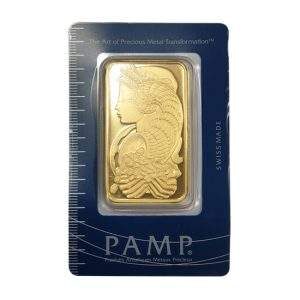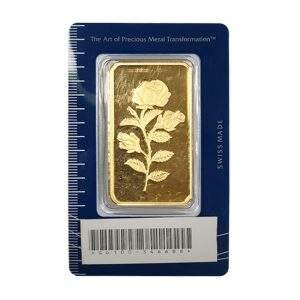Description
A gold bar, also called gold bullion or a gold ingot, is a quantity of refined metallic gold of any shape that is made by a bar producer meeting standard conditions of manufacture, labeling, and record keeping. Larger gold bars that are produced by pouring the molten metal into molds are called ingots. Smaller bars may be manufactured by minting or stamping from appropriately rolled gold sheets. The standard gold bar held as gold reserves by central banks and traded among bullion dealers is the 400-troy-ounce (12.4 kg or 438.9 ounces) Good Delivery gold bar. The kilobar, which is 1000 grams in mass (32.15 troy ounces), is the bar that is more manageable and is used extensively for trading and investment. The premium on these bars when traded is very low over the spot value of the gold, making it ideal for small transfers between banks and traders. Most kilobars are flat, although some investors, particularly in Europe, prefer the brick shape. Asian markets differ in that they prefer gram gold bars as opposed to Troy ounce measurements. Popular sizes in the Asian region include 10 grams, 100 grams and 1,000 gram bars.




